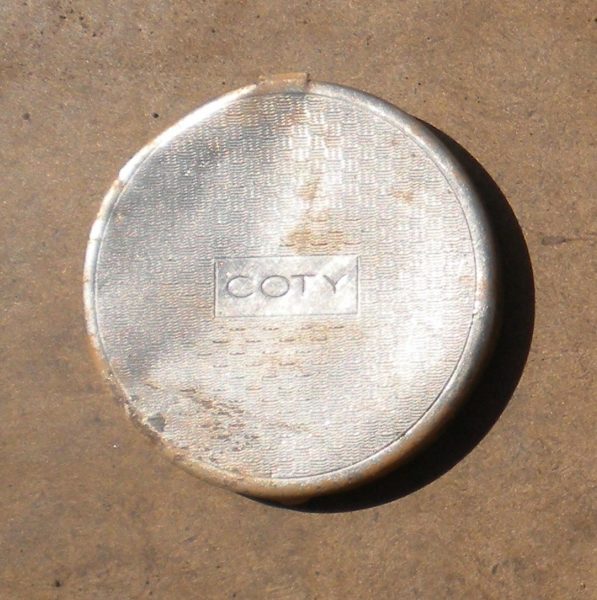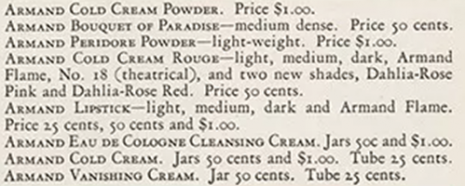By Sarah O’Donnell
December 2, 2024
Sarah O’Donnell recently graduated from ASU with her degree in Anthropology, and attended field school in Apex, Arizona this past summer. She presented at the Pecos Conference in August on the topic of catch and release archaeology at Apex, Arizona. She is currently working on a Master of Advanced Study in Geographic Information Systems at ASU and continues her work on the La Quemada Malpaso Valley Archaeology Project, which consists of digitizing excavation records from La Quemada, Zacatecas, Mexico to be published to the Digital Archaeological Record (tDAR). She hopes to continue her roles in research and academia and pursue a PhD in Archaeology in the future.

Sarah was awarded second place in the Cordell/Powers Prize Competition for her 2024 Pecos Conference paper, Catch-and-Release Archaeology- A Path Towards Solving the Curation Crisis. For more about Apex or the Apex, Arizona Archaeology Project, visit our website or email Dr. Emily Dale at emily.dale@nau.edu.
Homo sapiens have a long history of decorating our bodies. Ancient Egyptians are credited with the introduction of cosmetics 5,000 years ago, but there is evidence of red ochre being used as paint for rituals and ceremonies even further back. Makeup has played an impactful role in our society (for better or worse). In modern society, makeup is everywhere–from the stages on Broadway, to the silver screens of Hollywood, printed in magazines, plastered on billboards, and all over Youtube. So it is no surprise that cosmetics also found their way to the logging camp at Apex, Arizona.
Post-War Beauty Trends
As World War I ended and the new decade began, Americans started to see some bold choices in makeup. Women loved bright red lips, accentuating their Cupid’s bows. Bold eyeliner and mascara made its debut, and more shades of rouge (or blush) hit the shelves. The women of Apex were no exception to this trend. Although we have yet to find any lipstick or mascara containers, we have found several compacts that likely held rouge or face powder. Another common find around the Apex site is cold cream, which would have been used for skin care and cleanliness. While still a common product used primarily by women, cold cream containers, including Pond’s and Jaciel brands, have been found across Apex which might suggest that at least some of the men were also using it to keep their skin clean and cared for after a hard day’s work.
“Fearless. Forward. You”

Coty was founded in 1904 in France, expanded into the US in 1912, and is still around today. Although they began as a perfume company, they quickly branched out and sold a wide variety of cosmetics and hygiene products, from cold cream and rouge to shaving soap and toilet soap. Today, Coty owns roughly 40 brands, including more familiar names like CoverGirl, Sally Hansen, and Kylie Cosmetics.
The Coty compact lid found at Apex is likely a simpler rouge or face powder compact that, per a 1928 Coty catalog, would have cost anywhere from $1 to $1.50. It likely once had a mirror inside the lid and came with a powder puff.

“Devoted to Wisdom”

Princess Pat, or Lady Victoria Patricia Helena Elizabeth Ramsay, was the granddaughter of Queen Victoria. Considered “one of the most beautiful and eligible royal princesses of her generation,” she created quite a stir when she married a commoner in 1919 and relinquished her royal titles. Max and Frannie Gordon, founders of Gordon Gordon, Inc., took advantage of Princess Pat’s fame during a time when they were battling a trademark issue with their current logo. In 1921, they began marketing campaigns for their new line of Princess Pat makeup products, an affordable option for Great Depression women.
While the Princess Pat brand included rouge compacts, creams, lipsticks, and powders, our metal lid possibly belonged to the skin cleanser, which came in a milk glass jar.


“Power and Wisdom”
In 1562, Italian author Giovanni Marinello published a book titled “Gli Ornamente delle Donne” or “The Beautification of the Ladies”. The Marinello Company, founded by Ruth Maurer, adopted his name and ideas almost 350 years later and grew as a cosmetology school and cosmetics business. By the 1920s, the Marinello Company was producing face powders, creams, lipsticks, rouge, soap, and more. In fact, the 1920s saw a boom in product selection and by the late 1920s the company touted a line of products covering “almost every conceivable beauty need.” Under the pseudonym Emily Lloyd, Mauer even wrote a syndicated beauty column, pamphlets, and textbooks.


Our screw-on lid seemingly bears the original logo of the company–the elephant. The “M” in Marinello resembles the elephant used throughout Marinello’s early advertising. By 1926, the company had rebranded and a new font and new logo, an Art Nouveau profile of a woman’s head and shoulders. Compared to other Marinello products, our lid is simple. As with the Princess Pat lid, it may have belonged to a milk glass cold cream jar.
“In the Little Pink and White Boxes”
Created by Carl Weeks in 1915, the Armand Company was famous for their cold cream powder. This mix of face powder with cold cream was a unique cosmetic that Weeks introduced in 1918. Their line eventually spread to include Cold Cream Talcum Powder, Vanishing Cream, lipstick, nail polish, soap, and deodorant. The company even created color-coordinated schemes that encouraged women to assess their complexion, appearance, and personality to find their make-up type. Originally sold in a round, pink and white box, Armand Cold Cream Power became available in a refillable compact in 1921. The compact cost $1, with refills sold at $8 per dozen.


A 1926 Armand advertisement lists several tones of Cold Cream Rouge: light, medium, dark, Armand Flame, No. 18 (theatrical), Dahlia-Rose Pink, and Dahlia-Rose Red. Each cost 50¢. While our “Compacte Rouge” compact does not list the color, it would have come with a powder puff and mirror, as in this example from the National Museum of American History.


Mystery Artifact
Our December mystery artifact definitely looks like it should be identifiable, but we haven’t figured it out! A set of keys or stops attached to a metal strap and wrapped with wire, we originally thought it was part of an instrument or switchboard. Let us know if you recognize it!

Sources
Anon. Coty: Since 1904.
https://assets.contentstack.io/v3/assets/
blted39bd312054daca/bltf3ba39a12e828655/
6346c0baeded0211051c7042/
Heritage_Indesign_07102022_01b.pdf
Anon. Princess Pt, Ltd., est. 1907. Made in Chicago Museum. https://www.madeinchicagomuseum.com/single-post/princess-pat/
Armand. Are you making the most of your type? Blonde or Brunette–your beauty today depends on your make-up. “Armand Cold Cream Powder in the pink and white checked bat box” advertisement. Ladies Home Journal July 1926. https://www.ebay.com/itm/193749334328
Bennett, James. Armand. Cosmetics and Skin 28 July 2023. https://www.cosmeticsandskin.com/companies/armand.php
Compactstory. Princess Pat: The Real Story of this Cosmetics Brand. Collecting Vintage Compacts 11 October 2016. http://collectingvintagecompacts.blogspot.com/2012/01/princess-pat-real-story-of-this.html
Compactstory. The Marinello History: Part 1-Pacyderms and Pseudonyms. Collecting Vintage Compacts 11 June 2015. http://collectingvintagecompacts.blogspot.com/2012/04/marinello-pachyderms-and-pseudonyms.html
Compactstory. The Marinello History: Part 2-The Uncrowned Cosmetics Goddess. Collecting Vintage Compacts 9 November 2017. http://collectingvintagecompacts.blogspot.com/2012/08/marinello-part-2-uncrowned-cosmetics.html?q=marinello
Coty. Parfum de Luxe Coty, January 1928. https://cotyperfumes.blogspot.com/2016/10/very-rare-antique-1920s-coty-perfume.html#google_vignette
National Museum of American History. Armand Compacte Rouge. https://www.si.edu/object/armand-compacte-rouge%3Anmah_1416297